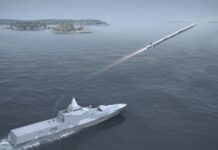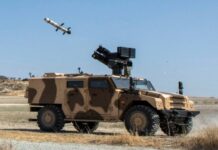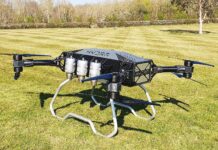The UK arm of Anglo-French complex weapons specialist MBDA opened the doors of the new Digital Battlespace Facility (DBF) at its site in Stevenage to a small group of journalists on 10 May 2023, while also giving updates on some of its latest weapon developments.
The DBF is designed to allow MBDA to develop, experiment with, test and demonstrate its weapon systems and the concepts used to operate them in a digital environment. This maximises what can be learned before development of systems and concepts takes place in the real world, taking both time and cost out of a given programme.
James Allibone, MBDA UK’s Deputy Managing Director, noted to ESD, for example, that, while the qualification of the Rapier surface-to-air missile system by the company’s predecessors in the 1960s would have taken hundreds of test firings and MBDA’s Land Ceptor air defence system took “tens of test firings”, when MBDA comes to qualify its Future Cruise/Anti-Ship Weapon (FC/ASW) only a handful of test firings will be required. This will be due to the fact that so much of the system will have been ‘proved out’ in advance in a digital environment, progressing the programme more quickly and at less cost.
Meanwhile, as MBDA further develops its DragonFire laser directed-energy weapon (LDEW), for example, the DBF can experiment with, develop and ultimately showcase to a customer how DragonFire could be dovetailed with the company’s Sea Ceptor air defence solution to create a comprehensive, layered air defence environment for a naval platform.
The DBF was created in an already-existing building at Stevenage, with its fit-out costing the company roughly GBP5-6 M (EUR 5.75-6.9 M). MBDA staff moved into the facility in October 2022, although it was not fully exploited until the beginning of this year.
The DBF features a Multi-Domain Battle Lab with ‘Blue Air’, ‘Red Air’ and ‘Land and Maritime’ subsections to simulate various mission scenarios, as well as a Visualisation Lab that can pull together and present all of the data generated by the DBF in real time. In a DBF demonstration scenario run on 10 May MBDA showed how the new electronic warfare (EW) variant of its Selected Precision Effects At Range (SPEAR) air-to-ground missile could be launched from an F-35 aircraft in conjunction with conventional SPEARs to defeat a hostile air defence network.
The DBF also has a Digital Backbone Room that allows it to be linked up to other sites, such as those of development partners or customers, both nationally and internationally.
Another advantage of the DBF is that it helps the training for a particular weapon system to be created in parallel with the development of the weapon itself, exploiting user feedback in the process.
Although MBDA has been using a number of the tools found in the DBF, its establishment is the first time all of those tools have been collocated under one roof.
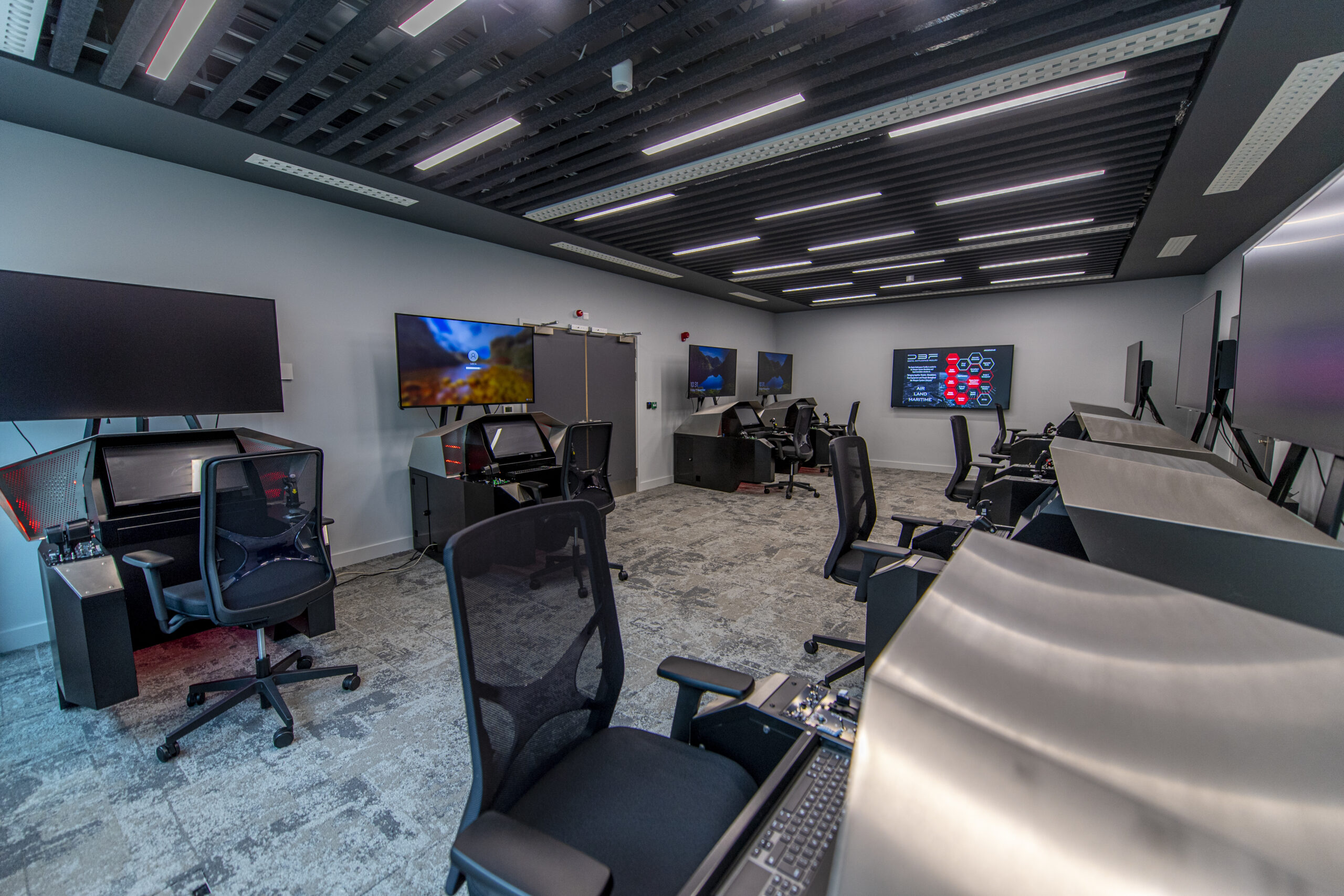
Beyond Storm Shadow
On 11 May the UK announced it had supplied MBDA Storm Shadow deep strike cruise missiles to Ukraine for Kyiv’s impending counter-offensive against the Russian occupiers in eastern Ukraine, but the wider Anglo-French MBDA is already working on the successor to its Storm Shadow in arguably the company’s most intriguing protect. As Mike Mew, MBDA’s Director of UK Sales and Business Development, presented a review of the company’s portfolio on 10 May, he admitted that FC/ASW was still largely classified. While this limited what he could say about the programme, Mew was able to outline a few details about the project.
“We have two Future Cruise/Anti-Ship Weapon concepts,” Mew explained. “One is the subsonic concept: very survivable, highly stealthy, the natural successor to Storm Shadow. And then the second one is the supersonic concept, which is looking more at high speed as a mode of defeat. They’re complementary capabilities, they are both being developed as part of the FC/ASW assessment phase, they are both being worked on by an international Anglo-French team, and they will both move into the development phase from 2025 to deliver that integrated Anglo-French cruise missile and anti-ship capability at the end of the decade.”
Brimstone
Moving on to the Brimstone family of air-to-surface missiles, Mew said these were “a great example of what we can do with product updates and spiral development over time”.
The original Brimstone was developed near the end of the Cold War in the late 1980s as a long-range anti-armour weapon. This first iteration of the missile was a ‘fire-and-forget weapon’ guided by a millimetre-wave seeker. Mew noted that Brimstone 2 was then developed as a more flexible weapon that could be used in a wider set of contexts with the introduction of a semi-active laser mode and a dual-mode seeker.
“And we’re now at Brimstone 3,” he said, “which has been modernised top to tail; the only thing that’s consistent with the original Brimstone is the external shape. New energetics, additional modes in the seeker, additional software modes for use from a wider range of launch platforms [such as attack helicop-ters and unmanned aerial vehicles].”
Mew pointed out that Brimstone 3 is going into production this year. “The first weapons are currently in the build and we’ll be delivering those Brimstone 3 weapons by the end of this year,” he said. Given that Brimstone is already integrated onto the Royal Air Force (RAF) Eurofighter Typhoons, Mew explained that there will be a brief requalification process for Brimstone 3 on Typhoon, while the weapon is also being integrated onto the RAF’s RG1 Protector medium-altitude, long-endurance (MALE) unmanned aerial vehicles, and that MBDA has conducted “a wide range of demonstrations of Brimstone in other contexts”.
Mew then noted that the British Army “are very interested in surface-launched Brimstone”, where the primary interest is mounting the weapon on the Boxer multi-role armoured vehicle “as part of the Mounted Close Combat Overwatch group of requirements”. Further to this, Mew noted “a burgeoning interest in Brimstone as part of a light forces deployment” and pointed out that MBDA is “participating in quite a lot of experimentation with the army, so joint experimentation on how they would use it, how they would deploy it, and it’s really a case of the army just starting to think about where it wants to place its priority in terms of the longer-term broader fleet versus some of these shorter-term, more [urgent operational requirement]-like deployments”, with the latter having come to the fore due to the ongoing conflict in Ukraine.
Land Precision Strike
“Alongside that, the other main area of exploration for us has been the Land Precision Strike [LPS] programme,” Mew continued. “This is been a concept study or series of studies that’s been running for several years. The intent is to look at the options for a missile to sit inside and work as part of the MLRS stable of weapons [the Guided Multiple Launch System and High Mobility Artillery Rocket Systems]. This is aimed at what weapon options can we use from that classic carrier to provide a precision strike capability against fleeting targets potentially in the complex urban environment where the larger rockets just won’t be able to do the job.
“Again, Ukraine has brought this into much sharper focus. It’s certainly validated the operational needs; it’s certainly validated the value of surface-to-surface fires,” said Mew, adding that the Ukraine conflict has additionally reignited the debate about simpler higher-mass weapons as opposed to more elaborate, higher-end weapons.
“We’re working through several concepts,” he said. “The team are working really closely with Army HQ. We’re pretty happy with the concepts that we have in the mix [for LPS], and it will move through into its assessment phase in the next year or so.”
SPEAR
Mew then went on to highlight recent developments with the SPEAR family of weapons. While SPEAR Capability 2 was addressed by Brimstone 2, SPEAR Capability 3 is leveraging Brimstone technology to produce a stand-off, high-precision missile that will ultimately be destined for the F-35 and be able to work in a swarm.
“Think of SPEAR as a miniature cruise missile,” said Mew. “It can do everything that Storm Shadow does in a smaller package that’s circa 100 kg. It’s got a turbojet in the back, a multi-effects warhead and a very clever seeker derived from the latest Brimstone seeker in the front, with lots of different effects modes.
“SPEAR 3 is in qualification now,” Mew noted. “We’re going to take it through its demonstration qualification firings on Typhoon in 2023, -24 and -25, and then it will go into the F-35 integration programme thereafter.”
The SPEAR 3 programme is currently a major point of focus for MBDA. “It’s at that point of delivery where we really need to make sure that we keep progressing it and we deliver everything we need, not only to the UK but also to the platform integration authority,” said Mew, “so it’s at that peak time of absolute focus for us.”
Added to SPEAR 3 is the weapon’s EW variant, which Mew billed as “a really exciting derivative, again demonstrating that principle of variants and spirals”.
“What we’ve done with SPEAR EW is you take out the warhead and you put in an electronic warfare payload: the one that we’ve worked on with our colleagues in Leonardo, and what you can then do is create a stand-off or stand-in jamming system,” mew explained. “That can be for platform protection or it can work with its teammates in the SPEAR team to confuse and suppress enemy radars as it goes in for that air-defence interdiction.”
DragonFire
Lastly, when ESD asked about the next of phase of development for MBDA’s DragonFire LDEW, Mew replied, “The first choice is do we go naval first or do we go land? The second one is what power class do you see as your ultimate goal, what application do you see as your ultimate goal? … Where we are focused as the Dragonfire team is on systems with the capability to move out to an increase in range and also against those harder and more difficult targets. So, when you get there, then you’re starting to think about power.”
DragonFire, which is being developed by MBDA in conjunction with QinetiQ Leonardo and the UK Ministry of Defence’s (MoD’s) Defence Science and Technology Laboratory, currently employs a 50 kW laser, but Mews noted that while power at the source is interesting, “it’s actually power at the target vulnerable spot that really matters, and so then you’ve got to be able to deal with atmosphere and deal with different environments”.
In terms of moving the project forward, Mew said, “You care about things like safety and you care about how you integrate that into a complete system. So once you’re taking it onto either a ship or truck, you care about ‘Where do I get my local power from?’ and the vibration environments: what does it have to withstand and so on and so forth. So that’s where we are at the moment.
“The MoD are running a series of business cases to think about where it wants to take laser systems,” Mews said. “The most interested exploiter [of the technology] is the Royal Navy. However, again, you look at Ukraine and you look at the activities we’ve been operating on, we’re getting a lot of international interest as well.”
Noting that DragonFire has the capability to grow to much higher power levels and be a really viable capability in either a ground-based or a maritime, Mews noted that MBDA is “just starting to put that jigsaw together now”.
Peter Felstead


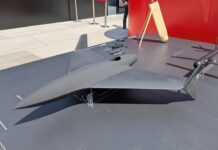

![Improving the odds of survival Pictured: Only once pre-flight checks have taken place to ensure protective gear, such as G-suits, harnesses, helmets, parachutes and more, is adjusted and is working properly, will Warthog pilots head out onto the tarmac for take-off. [USAF/2Lt Benjamin Williams]](https://euro-sd.com/wp-content/uploads/2025/06/1-In-the-cockpit-A-10C-taxis-for-take-off-Credit-USAF-2Lt-Benjamin-Williams-Kopie-218x150.jpg)
